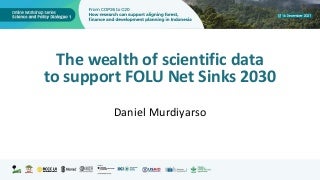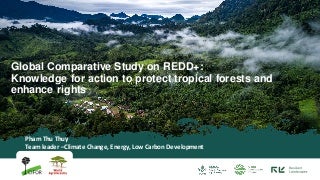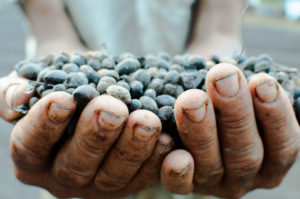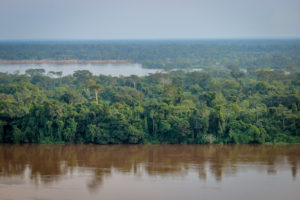
To address the duplication of initiatives in the Congo Basin, the Central African Forest Observatory (OFAC) – whose mission is to provide data to decision makers so they can create evidence-based policies – recently launched an interactive project monitoring platform. The online tool enables access to data and projects in the region, to promote collaboration and put an end to wasted resources.
Conservation of the Congo Basin forests is a critical, but complex undertaking. This massive tropical forest block, the world’s second largest, covers over 200 million hectares and spreads across six countries in Central Africa.
It is home to some of the world’s most critically endangered animals, such as lowland gorillas, as well as over 10,000 endemic tropical plant species.
It also provides livelihoods to 60 million people, who depend on forest resources for food, energy, and jobs – a significant economic contribution in one of the world’s least developed regions. And as if this was not enough, it stores around 46 billion metric tons of carbon, benefitting the whole planet facing climate change.
The importance of this ecosystem means that a multitude of actors, including donors, implementing agencies, national governments, and local organizations, are simultaneously carrying out conservation and development efforts on the ground.
While international interest, availability of funds, and political will are certainly good news, duplications of initiatives do happen. Information gaps and a lack of overarching coordination stand in the way of achieving environmental and development objectives.
“In the last two decades, the region has seen an exponential increase in the number of actors in the forest-environment sector,” explained Quentin Jungers, OFAC’s technical advisor, who leads the IT team behind the platform.
“The new project monitoring platform answers calls for better coordination at the regional and national levels. It will allow organizations and governments to share information, promote collaborations, and ensure harmonization.”
Read also: Can DRC’s community forests alleviate poverty?
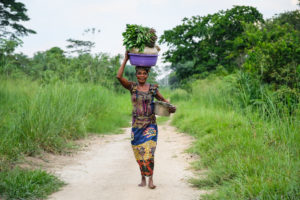
A call for a regional approach
Better coordination has long been part of the Congo Basin conservation agenda. In 1999, the Central Africa Forest Commission (COMIFAC), became the birth-child of all ten Central African countries; its mandate to oversee the sustainable management and conservation of the Congo Basin’s forest ecosystems.
In 2005, the finalizing of a first Convergence Plan provided a common strategy for the COMIFAC Member States and international partners to reach sustainable goals.
OFAC officially became part of COMIFAC in 2011, leading to the development of an integrated monitoring and evaluation system just a few years later.
“There are so many initiatives to support the sustainable management of Central Africa’s forests, that sometimes it is difficult for COMIFAC to have a clear vision of all the efforts that contribute to the implementation of our Convergence Plan,” explained Vincent Medjibe, OFAC coordinator at COMIFAC. “We expect this platform to give us an accurate overview of what is happening on the ground”.
Read also: Observatory addresses urgent need to monitor forests in East Africa
Digital solutions
The development of the project monitoring platform, the first of its kind in Central Africa, began in 2015 with a basic repository and took over 8 months of intense work to convert into an analytical platform, which was finally ready last year.
“We started by developing a basic database with experts, projects, and capacity building initiatives in the fields of environment and climate change, sustainable management of natural resources, and conservation,” said Donald Djossi, programmer at OFAC. Though he says the real technical challenge was to find the “interconnections” of the projects, so as to provide a comprehensive cross-view of all initiatives.
“Our goal was that all kinds of users, tech-savvy or not, could benefit from it,” added Jungers. Appetite for the platform is clear. Though it was only launched a couple of months ago, it already has an average of 60 users per week.
Users can benefit from a directory and an interactive map showing geolocation and explanation of each initiative, an analysis tab that examines the current state of projects, as well as a report generation tool.
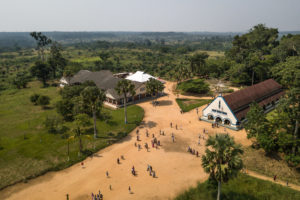
Learn more: Go to the project monitoring platform website
Contributions needed
This platform is a collaborative initiative, and its success will depend on the organizations’ will to share their projects’ information. Until now, over 651 projects have already been submitted, out of which 508 have been validated and published, a significant amount considering that they account for 5 billion euros of funding.
To contribute, it is first necessary to create a user account. This gives organizations access to a private module. Then they can fill out a form for each project. “That’s all is needed,” said Djossi.
After a project is submitted, OFAC’s team reviews the form to ensure that all information is accurate and to avoid duplications. “We need to go through this validation process to ensure that our platform is a reliable source,” explained Jungers.
To encourage organizations to feed the platform, with their user account they also get access to a free monitoring tool that can help them track the progress of their projects. “They can have a report with one click”, said Djossi.
The next step for OFAC is to use the information on this platform to produce a regional publication called “The State of the Projects”, expected in 2020. As a complementary instrument, it will analyze the impact of projects in the Congo Basin in the last 15 years, looking to better integrate them into national and regional environment policies.
“The State of the Projects will help regional policymakers understand what has been done to conserve Central Africa’s forests, and what still needs to be done,” concluded Jungers.
By Ahtziri Gonzalez, originally published at CIFOR’s Forests News.
This research was supported by the RIOFAC, funded by the European Union.
This work is also part of the CGIAR Research Program on Forests, Trees and Agroforestry (FTA), the world’s largest research for development program to enhance the role of forests, trees and agroforestry in sustainable development and food security and to address climate change. CIFOR leads FTA in partnership with Bioversity International, CATIE, CIRAD, ICRAF, INBAR and TBI. FTA’s work is supported by the CGIAR Trust Fund.





